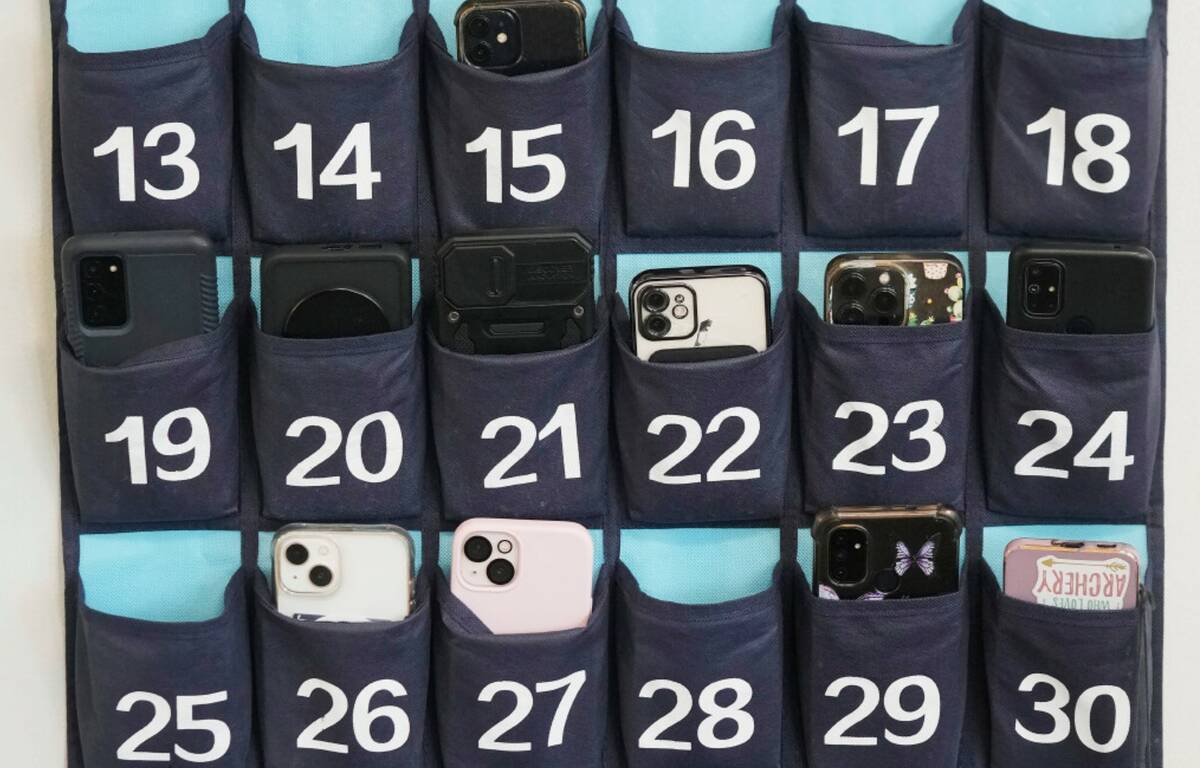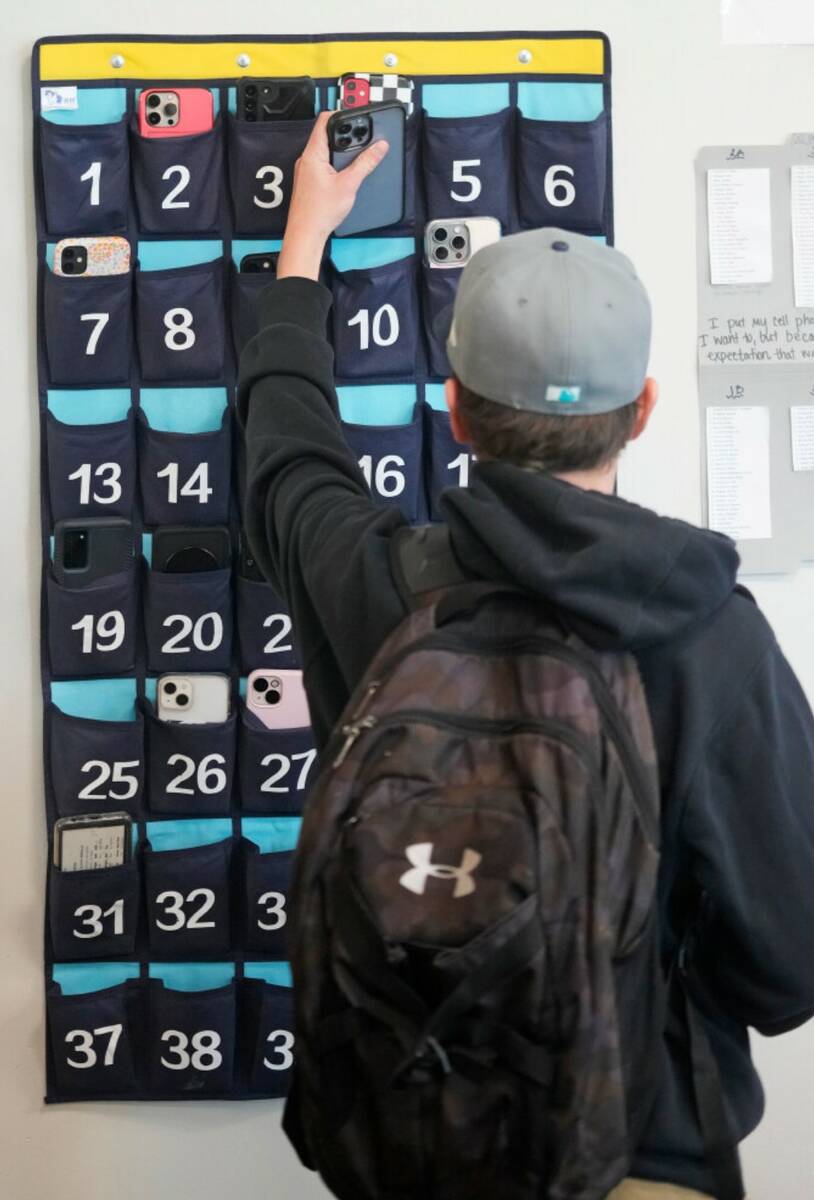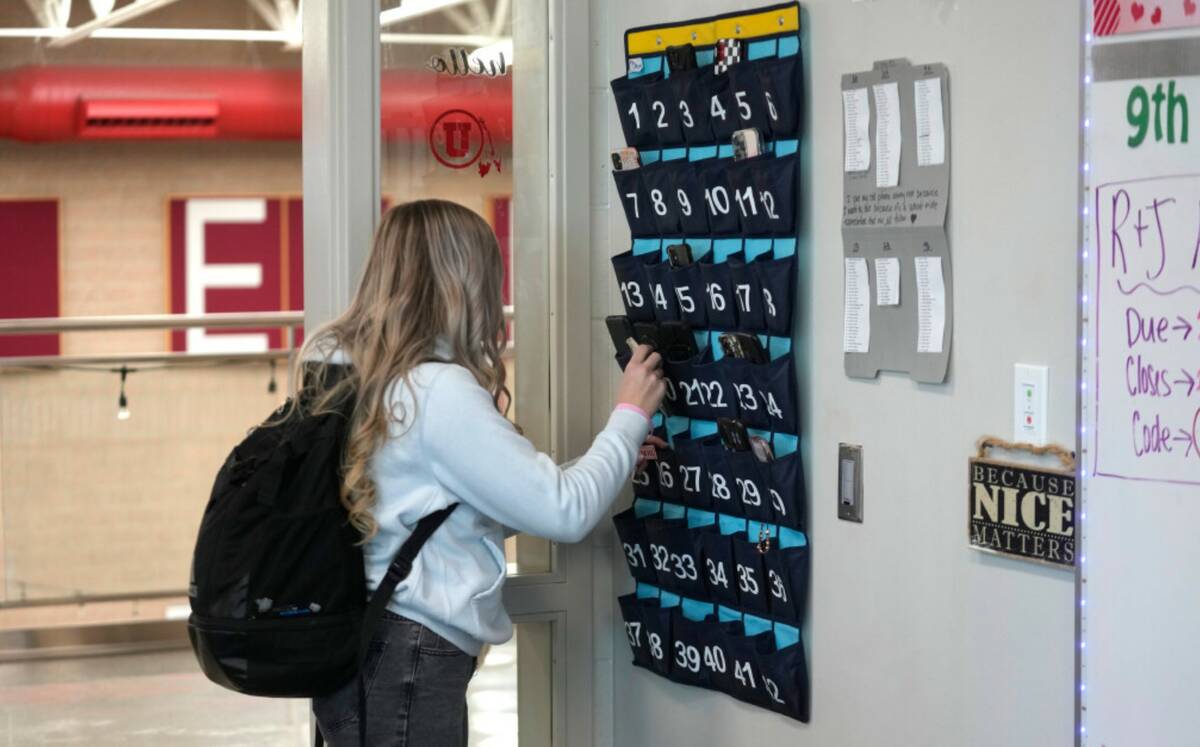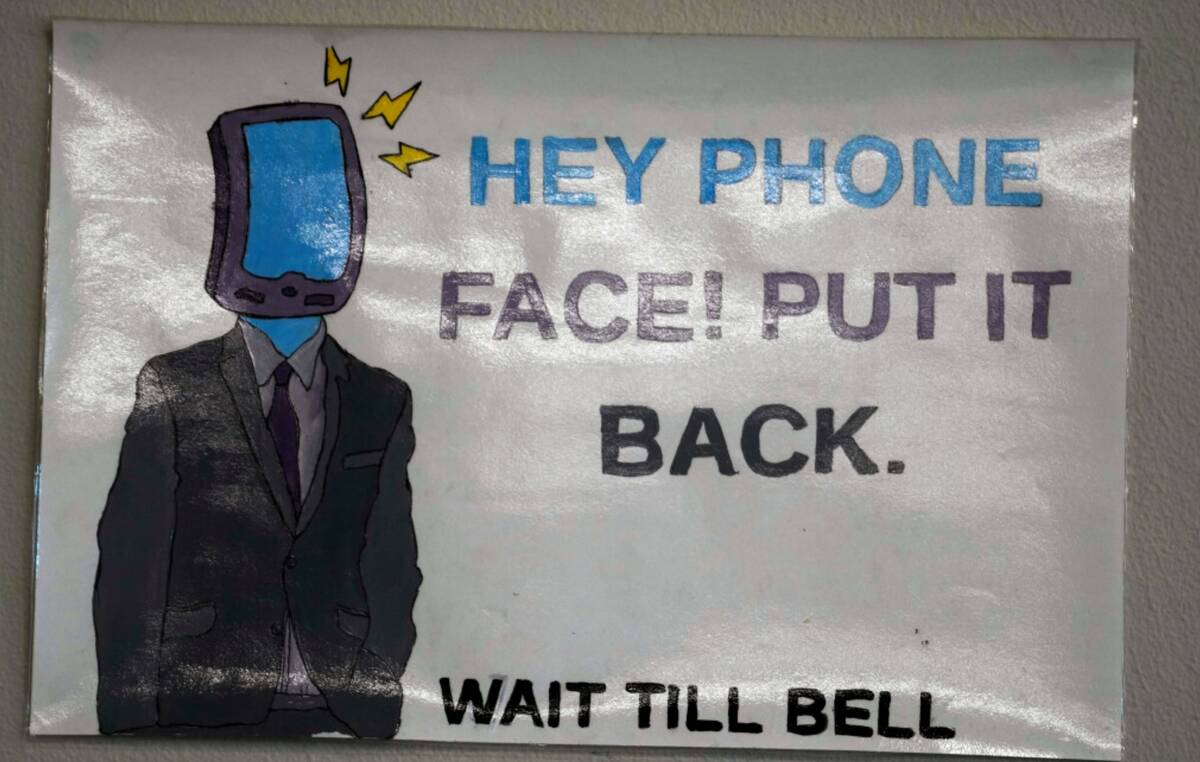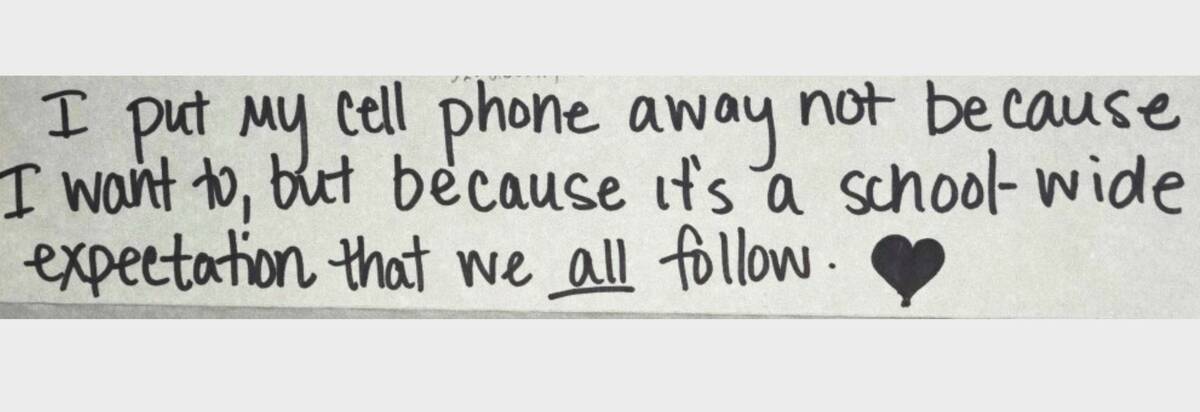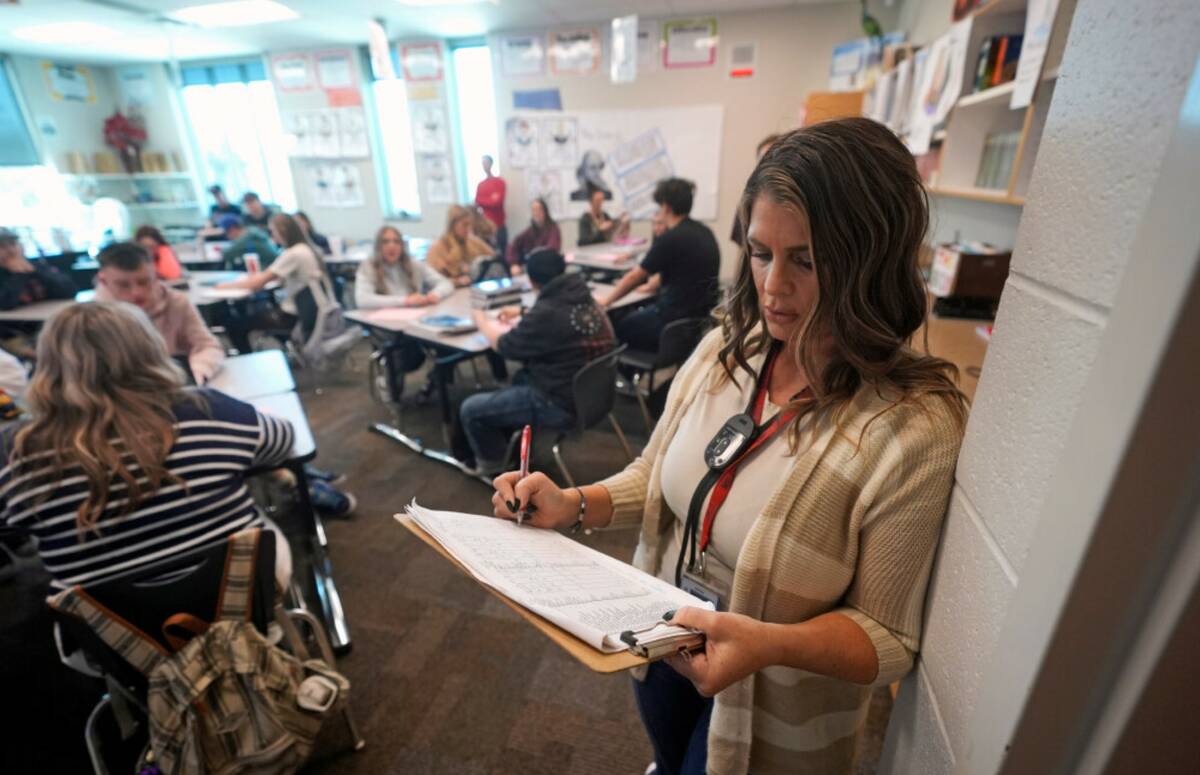‘Out of control’: Utah schools may ban cellphones from classrooms
SAN FRANCISCO — In California, a high school teacher complains that students watch Netflix on their phones during class. In Maryland, a chemistry teacher says students use gambling apps to place bets during the school day.
Around the country, educators say students routinely send Snapchat messages in class, listen to music and shop online, among countless other examples of how smartphones distract from teaching and learning.
The hold that phones have on adolescents in America today is well-documented, but teachers say parents are often not aware to what extent students use them inside the classroom. And increasingly, educators and experts are speaking with one voice on the question of how to handle it: Ban phones during classes.
“Students used to have an understanding that you aren’t supposed to be on your phone in class. Those days are gone,” said James Granger, who requires students in his science classes at a Los Angeles-area high school to place their phones in “a cellphone cubby” with numbered slots. “The only solution that works is to physically remove the cellphone from the student.”
Most schools already have rules regulating student phone use, but they are enforced sporadically. A growing number of leaders at the state and federal levels have begun endorsing school cellphone bans and suggesting new ways to curb access to the devices.
Utah governor speaks out
The latest state intervention came in Utah, where Gov. Spencer Cox, a Republican, last month urged all school districts and the state Board of Education to remove cellphones from classrooms. He cited studies that show learning improves, distractions are decreased and students are more likely to talk to each other if phones are taken away.
“We just need a space for six or seven hours a day where kids are not tethered to these devices,” Cox told reporters this month. He said his initiative, which is not binding, is part of a legislative push to protect kids in Utah from the harms of social media.
Last year, Florida became the first state to crack down on phones in school. A law that took effect in July requires all Florida public schools to ban student cellphone use during class time and block access to social media on district Wi-Fi. Some districts, including Orange County Public Schools, went further and banned phones the entire school day.
Oklahoma, Vermont and Kansas have also recently introduced what is becoming known as “phone-free schools” legislation.
And two U.S. senators — Tom Cotton, an Arkansas Republican, and Tim Kaine, a Virginia Democrat — introduced legislation in December that would require a federal study on the effects of cellphone use in schools on students’ mental health and academic performance. Theirs is one of several bipartisan alliances calling for stiffer rules for social media companies and greater online safety for kids.
Trouble with bans
Nationally, 77% of U.S. schools say they prohibit cellphones at school for non-academic use, according to the National Center for Education Statistics.
But that number is misleading. It does not mean students are following those bans or all those schools are enforcing them.
Just ask teachers.
“Cellphone use is out of control. By that, I mean that I cannot control it, even in my own classroom,” said Patrick Truman, who teaches at a Maryland high school that forbids student use of cellphones during class. It is up to each teacher to enforce the policy, so Truman bought a 36-slot caddy for storing student phones. Still, every day, students hide phones in their laps or under books as they play video games and check social media.
Tired of being the phone police, he has come to a reluctant conclusion: “Students who are on their phones are at least quiet. They are not a behavior issue.”
A study last year from Common Sense Media found that 97% of kids use their phones during school hours, and that kids say school cellphone policies vary — often from one classroom to another — and aren’t always enforced.
For a school cellphone ban to work, educators and experts say the school administration must be the one to enforce it and not leave that task to teachers. The Phone-Free Schools Movement, an advocacy group formed last year by concerned mothers, says policies that allow students to keep phones in their backpacks, as many schools do, are ineffective.
“If the bookbag is on the floor next to them, it’s buzzing and distracting, and they have the temptation to want to check it,” said Kim Whitman, a co-founder of the group, which advises schools to require phones be turned off and locked away all day.
Some students say such policies take away their autonomy and cut off their main mode of communication with family and friends. Pushback also has come from parents who fear being cut off from their kids if there is a school emergency. Whitman advises schools to make exceptions for students with special educational and medical needs, and to inform parents on expert guidance that phones can be a dangerous distraction for students during an emergency.
Jaden Willoughey, 14, shares the concern about being out of contact with his parents if there’s a crisis. But he also sees the upsides of turning in his phone at school.
‘Focus on your work’
At Delta High School in rural Utah, where Jaden is a freshman, students are required to check their phones at the door when entering every class. Each of the school’s 30 or so classrooms has a cellphone storage unit that looks like an over-the-door shoe bag with three dozen smartphone-sized slots.
“It helps you focus on your work, and it’s easier to pay attention in class,” Jaden said.
A classmate, Mackenzie Stanworth, 14, said it would be hard to ignore her phone if it was within reach. It’s a relief, she said, to “take a break from the screen and the social life on your phone and actually talk to people in person.”
It took a few years to tweak the cellphone policy and find a system that worked, said Jared Christensen, the school’s vice principal.
“At first it was a battle. But it has been so worth it,” he said. “Students are more attentive and engaged during class time. Teachers are able to teach without competing with cellphones. And student learning has increased,” he said, citing test scores that are at or above state averages for the first time in years. “I can’t definitively say it’s because of this policy. But I know it’s helping.”
The next battle will be against earbuds and smartwatches, he said. Even with phones stashed in pouches, students get caught listening to music on air pods hidden under their hair or hoodies. “We haven’t included earbuds in our policy yet. But we’re almost there.”



